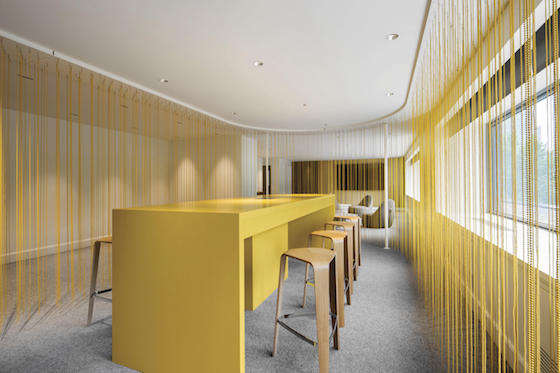The experiential meeting is on the rise. According to American Express’ 2018 Global Meetings and Events forecast, hoteliers are predicting an increase of almost 4% in demand for nontraditional meeting facilities. And getting that experience to land often requires smaller meeting spaces.
Ron Shah is founder and CEO of Bizly, a small meetings booking platform that launched in September. He says the utilization rate for smaller corporate meeting spaces at hotels and restaurants is approximately 20%, way below demand for those same spaces.
“What we’ve seen is, this large conference investment is often being traded out for several small events,” Shah says. “And it’s because you just have this more intimate opportunity to connect.”

Meeting and event planning industry association Meeting Professionals International defines an experiential meeting as one designed with participant engagement at the forefront, with every component of the meeting adding up to an opportunity to create lasting impressions.
Traditional meetings are usually planned with a focus on the logistics, like selecting menus, outlining tech needs and determining room setup, says Matthew Marcial, vice president, education and events for Meeting Professionals International.
“Meeting and conference attendees today have busier schedules and shorter attention spans, so their time out of the office has to be optimized,” he says. “Meetings that are designed to be more experiential will evaluate all aspects of the program to purposefully engage a participant’s senses and create experiences that leave lasting impressions.”
Meeting planners, therefore, are looking for more non-traditional and unique spaces for events and require more flexibility with setup requirements, according to Marcial.
Updating tradition
Montreal’s Fairmont Queen Elizabeth was a traditional convention hotel that was cutting-edge when it opened in 1958 – it was the first hotel in North America to have telephones in each of its 982 rooms. Recently, it underwent a C$140 million (US$110.6 million) renovation, completed in July, that removed 32 guest rooms and increased the meeting and convention footprint to 85,000 square feet from 50,000.
The hotel’s third floor now has smaller meeting spaces, including 13 rooms, seven of which have themes and include, for instance, a pingpong table that converts to a meeting table, and a “Dr. Strangelove” board meeting space with a circular table and a series of video screens that curve 180 degrees around the room.
Anne Marie Johns, regional director of sales and marketing, eastern Canada, for Fairmont, says the goal was to increase meetings at the hotel by 25% and leverage likely users of the space, including Montreal’s energetic creative industry, to spread the word.
“The locals are your number one ambassadors for your product, and they are also going to be the demand driver for meetings from outside the city” among their international companies, Johns says. Locals make up about 30% of meetings at the hotel.
Even before the expansion, “there was already a trend in small meetings,” Johns says – the hotel was hosting about 700 meetings of 50 people or less annually. The themed rooms on the third floor, called CoLab3 for collaboration, took inspiration from IT company work spaces and broke out of what Johns calls the “plain, square-box meeting rooms.”
“The mandate behind that was … let’s create a creative environment, get people out of their day-to-day, come in for a one-day or two-day meeting, solve a problem, brainstorm new ideas,” Johns says.
Creating engagement
For Meg Prendergast, principal at Chicago-based interior design firm Gettys Group, creating an engaging meeting space often means carving out nontraditional areas in the lobby or a hotel’s F&B areas for pop-up opportunities.
“Lobbies are becoming much more activated because people are hanging out in them more often,” Prendergast says. “People don’t really live their lives in really regimented rows of tables with banquet chairs anywhere else outside of that kind of venue,” she continues. “So in essence, new meeting spaces are trying to better reflect how people actually gather in today’s world.”
And the breakout space is just as critical as the meeting room itself, Prendergast adds.
During a revamp of meeting spaces at the Renaissance Chicago Downtown a year ago, Gettys persuaded the hotel to forego four dated meeting rooms in lieu of a small ballroom with plenty of natural light. Meeting attendees then had access to both a lofted gallery space and an adjoining rooftop deck.
“So the notion that people can just flow from one space to the next is another element here,” Prendergast says. “And then everyone feels like they’re getting a completely fantastic experience in the space of one floor but using a relatively contained amount of square footage.”
If you’re a hotel that can’t afford to rebuild or refurbish outdated meeting spaces, great lighting should be your new best friend, says Prendergast, whose firm employs a lighting consultant on projects.
“Lighting is so incredible,” she says. “Light, space and air quality are always going to be the top three things that are important to people. And if you don’t have those, attendees may not realize what they’re not getting, but it definitely affects their experience.”
